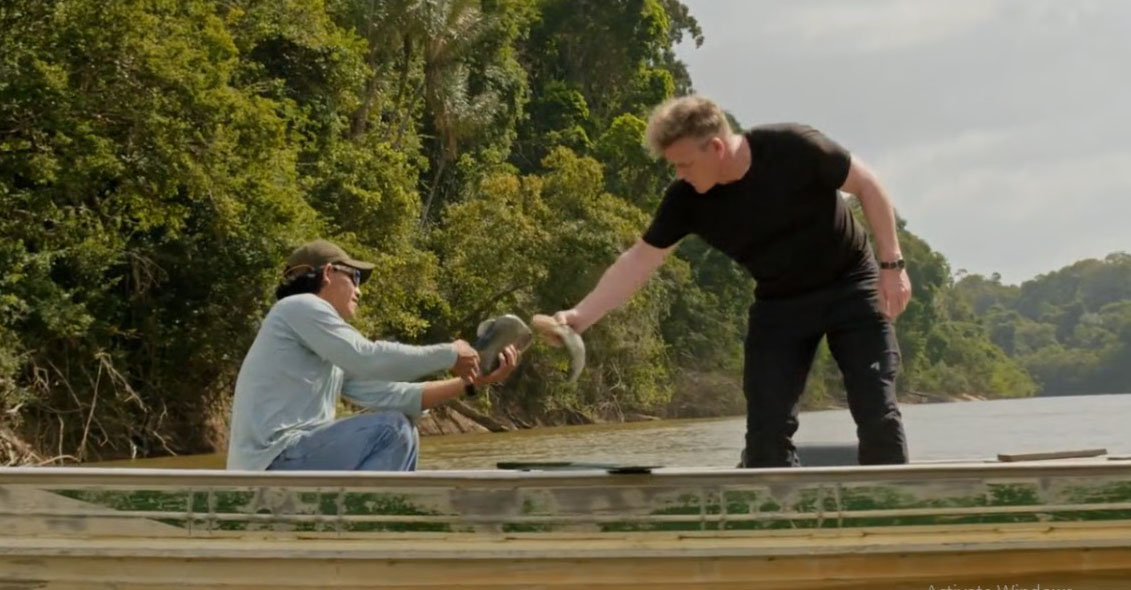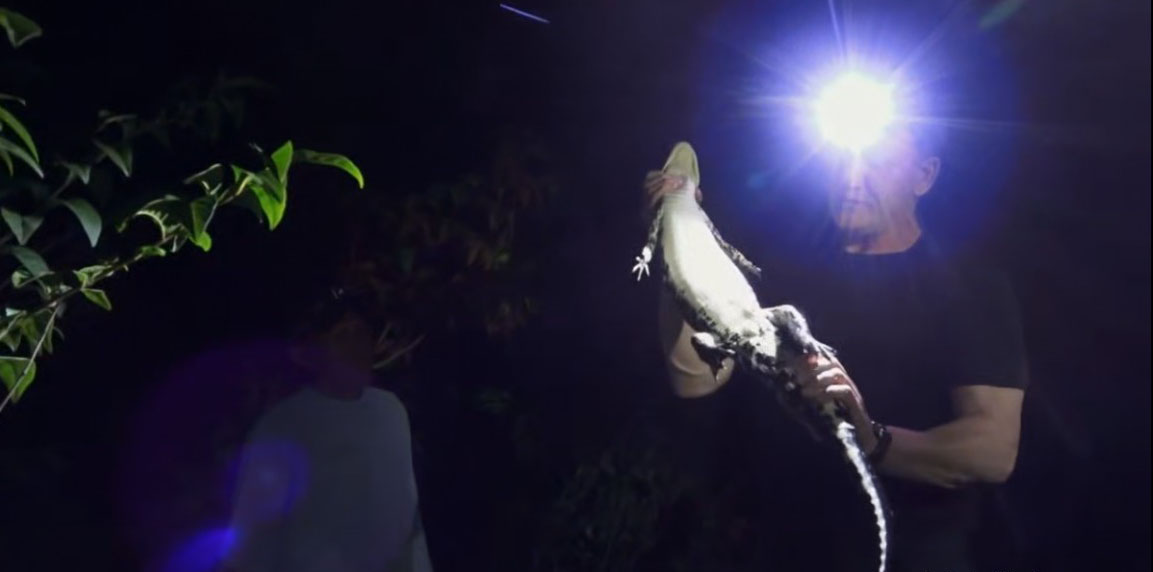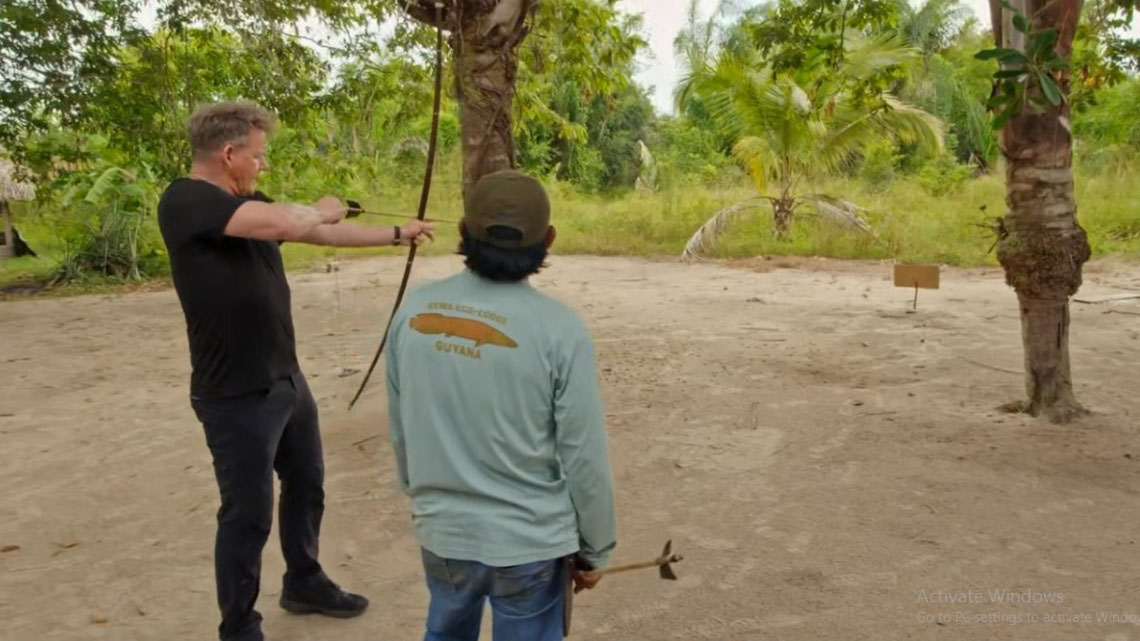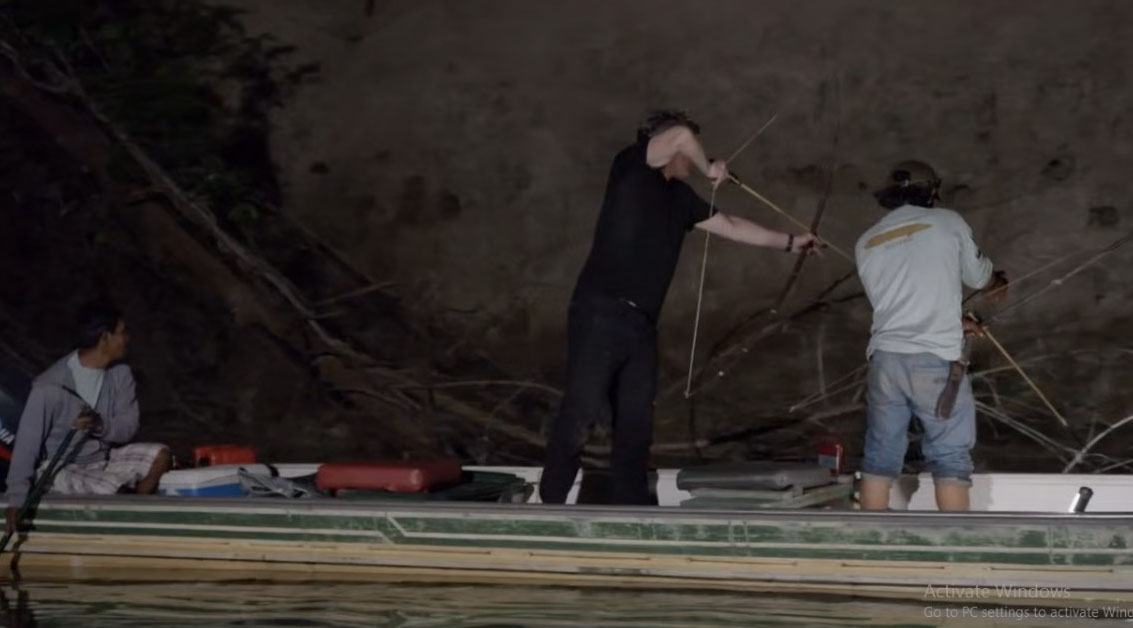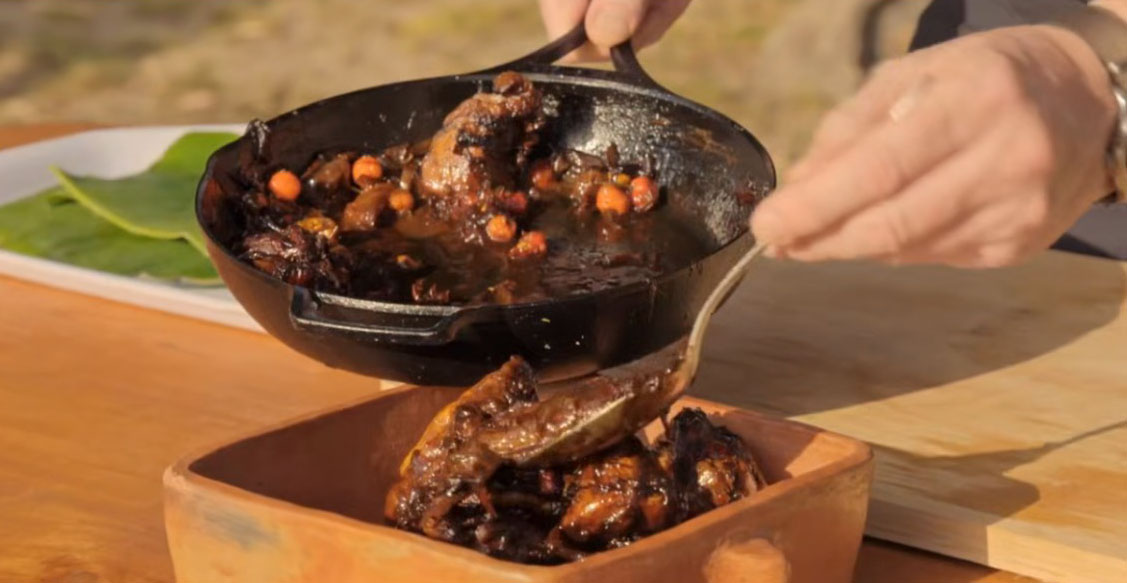An adventure-filled episode of Gordon Ramsay: Uncharted last week showcased a side of Guyana that not many Guyanese may ever experience in their lifetime: Chicken Pepperpot? Or is it Pepperpot Chicken.
The episode, “Guyana’s Wild Jungles,” which aired last Sunday on the National Geographic Channel, also put a spotlight on the way of life of some of Guyana’s indigenous people and reinforced the importance of the jungles and rivers to their survival.
It also evoked nostalgia for some in the Guyanese diaspora as it opened in the vibrant and bustling city.
Ramsay’s show, which is in its second season, is centred on local cuisines of remote and indigenous communities across the world as he searches for epic adventures and culinary inspiration. On the latter score, news that the British chef made Pepperpot using chicken did seem to strike some as a step too far, especially after he had labba Pepperpot as his first meal here.
From watching the episode, here are my five takeaways:
1. The Goliath birdeater spider makes a delicious snack
In the jungle, where almost everything can be consumed by one living thing or another, we discover that the legs of this giant can make for a delicious snack. Rovin Alvin, a Rewa native and Ramsay’s guide in the jungle, shows him the techniques for hunting for the spider after they spent several minutes catching piranhas. As they waited for the piranhas to be fully cooked, Alvin suggest they get a snack.
“Snack? What kind of snack do you find in the jungle?” a shocked Ramsay asks.
“Aa bird eating Goliath spider,” Rovin responds.
With that said, their hunt begins and Rovin soon spots a hole in the ground, which was the home to the spider, which is part of the Tarantula family. Using a stick, he lures the spider out of its house capturing it by piercing it with a stick. They return to the fire and roast it for several minutes before digging in.
With its legs resembling that of a crab, each leg is pulled apart for a crunchy delight and Alvin proclaims “this is what we call a snack.”
“It looks crab-like and the meat is tasty and really sweet… I would say it has that crab meat chicken wings texture,” Ramsay says as he takes his first bite. He advises, however, “Forget the word tarantula and close your eyes and think chicken wings.”
2. If you can’t shoot an arrow you can’t get a wife in Rewa
To hunt for the great Arowana, a sweet water scale fish that can grow up to four feet in length, Ramsay is told he has to make his own bow and arrow.
After assembling his bow and arrow, he is given some lessons on aiming and shooting but he fails miserably during his initial attempts and he was not spared of the taunts of his guide, who said his grandmother could do a better job than the world famous chef.
Alvin makes it clear that if he couldn’t precisely shoot his arrow, as village traditions goes he wouldn’t be able to get a wife or he could easily become a divorcee.
After spending much time practicing, Ramsay is finally able to hit his target and leaves later on his hunt for the Arowana as nightfall.
3. Chicken can be used to make Pepperpot
Pepperpot, recognised as a national dish, is traditionally cooked with beef, pork, wild meat and even mutton and venison in some sections. But chicken? I have to admit that this is not a meal I approve of although judging by the seeming consensus on social media, anything can be used to make Pepperpot once you ensure you have the cassareep. The Toshao of Rewa approved of the “Chicken Pepperpot” and deemed it as a tasty dish, singing the praises for the renowned celebrity chef who was nervous about how his spin on the indigenous dish would be accepted by the village chief.
4. Life in the wild looks like an adventure but there are many real dangers present
“This has been the most exciting fishing trip that I have ever been on,” Ramsay remarked at one point. You just have to stop and understand the brilliance of the Amerindians’ lifestyle. There are no nets, no commercialisation. You just work with your arrow and bow… or bare hands.”
Despite being clearly scared at some parts and not sure if he would become a meal to the many predators he was surrounded by, Ramsay was a trooper and set out with an open mind on every adventure during his time here. Up to a point.
Told he would be hunting for caimans, Ramsay questioned if his guide was attempting to get him killed. “First were piranhas, then tarantulas, now caimans… Now you are telling me make sure you shuffle your feet because there is sweet water stingrays in the water but I can’t do it too strong or I will attract piranhas. What we doing here? … Are you trying to get me killed?” he questioned.
During his hunt for the black piranhas he had to learn the traditional technique of slapping the calm water to attract the piranhas. And after several tries, he caught a large piranha with a traditional fishing rod although he was somewhat disappointed Alvin’s catch was bigger.
He learnt how to construct and assemble his own bow and arrow after selecting the perfect rod from the arrow palm. Under Alvin’s guidance, he was able to assemble his arrow and bow but was unfortunately not able to catch any Arowana as his timing was off.
This challenge, he said, shows how difficult it is to catch your next meal. Even Alvin, who is an expert hunter, was unable to catch a prized fish.
Ramsay called the trip the most exciting for him and he was appreciative of the hospitality and guidance that were shown to him. “It has been amazing. Guyana has to be one of the most uncharted adventures. This jungle is filled with some of the most exciting foods found anywhere in the world. Guyana is a place that I will definitely not be forgetting for many years,” he emphasised.
5. The importance of the forest to the indigenous peoples
If every Guyanese has the opportunity to explore the forest like Ramsay did, I think there would be a better appreciation and understanding of why the forest needs to be protected at all costs. Ramsay describes the forest and rivers as the bloodline for the Makushi nation that lives in Rewa, North Rupununi, in Region Nine. “It is both a highway and supermarket and the tribe has spent their entire lives living off the river,” he narrates. He also refers to the jungle as a “vending machine” since at every corner a meal or a snack can be found.
The Amerindian way of life is so powerful, the celebrity chef said as he pointed out that food is sought from both land and water. “Everywhere you turn there is something to eat. The jungle is full of food but it really comes alive at nights when every living creates comes out to feed it is best time to hunt,” Ramsay says.
His vivid description of life in the jungle underscores the unique relationship that both the human and wildlife inhabitants share with their environment, which activities like logging and mining can disrupt.
